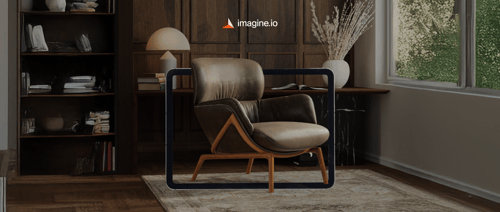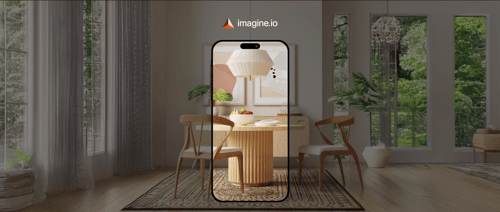The retail industry is undergoing a profound transformation. As consumer behaviors evolve and omnichannel strategies take center stage, traditional approaches to merchandising are no longer sufficient. Brands and retailers are under increasing pressure to design store layouts that are not only visually compelling but also agile, data-driven, and scalable.
In this new landscape, virtual store design powered by 3D tools is rapidly emerging as the new standard. These platforms enable businesses to plan, visualize, and optimize retail environments in a digital format—before any physical execution takes place. The result is faster decision-making, improved cross-functional collaboration, and more consistent in-store execution.
This blog explores why virtual store design is no longer a future-forward concept but a practical and powerful solution being adopted by some of the most forward-thinking retail organizations today.
Get the latest updates straight to your inbox.
By clicking sign up you'll receive occasional emails from imagine.io. You always have the choice to unsubscribe within every email you receive.
What is Virtual Store Design?

Virtual store design refers to the use of 3D visualization and layout tools to create, test, and optimize retail environments digitally—before anything is executed physically. Imagine being able to:
- Walk through a fully built store layout in a browser
- Swap out displays, signage, or shelf items in seconds
- Preview how different audiences will navigate a space
- Share that layout with marketing, sales, and suppliers in real-time
That’s what virtual store design enables. It combines the flexibility of software with the realism of physical environments, offering a faster, smarter, and more scalable approach to merchandising.
Why the Shift to 3D Tools is Inevitable
Let’s look at the key drivers behind this transformation.
1. Visual Merchandising is Now Digital-First
In a pre-COVID world, store teams could physically mock up a plan, photograph it, and use that for alignment. But today, visual merchandising needs to work across digital platforms, remote teams, and global product lines. With 3D tools:
- Layouts can be created and reviewed virtually—no travel or shipping is needed
- Teams can explore real-time versions of the space from anywhere
- Creative iterations can be made instantly, not days or weeks later
This isn’t just efficient—it’s essential when speed-to-market and cross-functional alignment are critical to staying competitive.
2. Legacy Planograms Are Holding You Back
Planograms have been a staple in retail for decades, but let’s call it out: they're outdated.
They're:
- 2D, static, and disconnected from real-world visuals
- Hard to interpret for teams who don’t speak "planogram."
- Difficult to scale across geographies and store formats
Modern 3D layout tools replace static diagrams with immersive, interactive models that any stakeholder can understand at a glance. They let you plan like a creative, operate like a strategist, and execute like a machine.
3. Retailers Need to Test, Learn, and Pivot—Fast
Whether you're launching a new product, testing a seasonal endcap, or experimenting with store-in-store concepts—time is money. 3D store design tools allow teams to:
- A/B test multiple layouts virtually
- Predict customer flow and sightlines
- Make data-backed decisions before rollout
No more wasted budget on unproven floor plans. No more printing signage or shipping displays for layouts that may not work. Just smarter merchandising decisions—before anyone steps into the store.
4. Collaboration Across Teams and Vendors is Seamless
Retail merchandising isn’t a solo act. It involves marketing, category managers, suppliers, regional heads, and often, external vendors. Virtual store design platforms like imagine.io literally bring all these stakeholders into one shared space.
With shared 3D environments:
- Everyone works off the same visual source of truth
- Feedback loops shrink from weeks to hours
- Execution becomes faster and more accurate
For brands managing hundreds of SKUs, regions, and promotions, this level of collaboration isn’t just helpful—it’s game-changing.
5. 3D Layouts Future-Proof Your Visual Content Strategy

Here’s where the long game comes in. A virtual store layout isn’t just a one-time visual—it’s a reusable digital asset. From a single 3D store file, you can:
- Generate planograms
- Create marketing visuals
- Export product callouts or category guides
- Simulate AR/VR experiences
Imagine building a store once—and then using that layout for eCommerce, social campaigns, sales training, and supplier onboarding. That’s the compounding value of 3D.
How Platforms Like imagine.io Make It Happen
At imagine.io, we’ve seen firsthand how brands are transforming their merchandising with interactive 3D store builders and automated layouts. Our platform allows teams to:
- Drag and drop fixtures, walls, and products into fully customizable store environments
- Auto-generate layouts based on product data and display logic
- Instantly export planograms and visual decks for team use
But what’s most powerful? It’s built for non-technical users, so merchandisers and marketers can own the visual process—no CAD experience is required.
Conclusion: Ready to Rethink Retail Planning?
The way we shop has changed. So has the way we sell. It’s time for the way we design retail spaces to catch up. Virtual store design powered by 3D tools is not just a trend—it’s the foundation of modern merchandising. It empowers you to work faster, collaborate smarter, and launch with confidence.
If you're still planning with static documents or outdated tools, you're missing out on a faster, more visual way to drive sales and shopper engagement. Let’s build the store of the future—today. Book a demo with imagine.io and see how our virtual store design tools can transform your retail planning process from concept to execution.


.gif?width=1296&height=1296&name=Untitled%20design%20(8).gif)




.png?width=500&name=How%20to%20Add%20a%203D%20Product%20Configurator%20to%20Your%20WordPress%20Website%20(Complete%20B2B%20Guide).png)
















%20(1).png?width=500&name=Why%20Exploded%20Mattress%20Views%20Matter%20(And%20How%20to%20Generate%20Them)%20(1).png)
.png?width=500&name=Best%20Shopify%20Product%20Configurator_%20How%20to%20Choose%20the%20Right%20One%20(2).png)
.png?width=500&name=Why%20Exploded%20Mattress%20Views%20Matter%20(And%20How%20to%20Generate%20Them).png)



.png?width=500&name=Best%20Shopify%20Product%20Configurator_%20How%20to%20Choose%20the%20Right%20One%20(1).png)







.png?width=500&name=How%203D%20Rendering%20Can%20Make%20or%20Break%20Your%20Industrial%20Design%20Pitch%20(1).png)








%20with%20Digital%20Twins%20and%203D%20Visualization.png?width=500&name=Optimizing%20Your%20Digital%20Asset%20Management%20(DAM)%20with%20Digital%20Twins%20and%203D%20Visualization.png)




.png?width=500&name=Styling%20Home%20Decor%20for%202025_%20From%20Global%20Influences%20to%20Playful%20Personalization%20(1).png)
